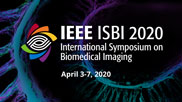Collection:

Chimeric antigen receptor is an immunotherapy whereby T lymphocytes are engineered to selectively attack cancer cells. Image-based screens of CAR-T cells, combining phase contrast and fluorescence microscopy, suffer from the gradual quenching of the fluorescent signal, making the reliable monitoring of cell populations across time-lapse imagery difficult. We propose to leverage the available fluorescent markers as an experimentally-generated ground truth, without recourse to manual annotation. With some simple image processing, we are able to segment and assign cell type classes automatically. This ground truth is sufficient to train a neural object detection system from the phase contrast signal alone, potentially eliminating the need for the cumbersome fluorescent markers. This approach will underpin the development of cheap and robust microscope-based protocols to quantify CAR-T activity against tumor cells in vitro.
- IEEE MemberUS $11.00
- Society MemberUS $0.00
- IEEE Student MemberUS $11.00
- Non-IEEE MemberUS $15.00
Videos in this product
Experimentally-Generated Ground Truth for Detecting Cell Types in an Image-Based Immunotherapy Screen
Chimeric antigen receptor is an immunotherapy whereby T lymphocytes are engineered to selectively attack cancer cells. Image-based screens of CAR-T cells, combining phase contrast and fluorescence microscopy, suffer from the gradual quenching of the fluorescent signal, making the reliable monitoring of cell populations across time-lapse imagery difficult. We propose to leverage the available fluorescent markers as an experimentally-generated ground truth, without recourse to manual annotation. With some simple image processing, we are able to segment and assign cell type classes automatically. This ground truth is sufficient to train a neural object detection system from the phase contrast signal alone, potentially eliminating the need for the cumbersome fluorescent markers. This approach will underpin the development of cheap and robust microscope-based protocols to quantify CAR-T activity against tumor cells in vitro.
 Cart
Cart Create Account
Create Account Sign In
Sign In
